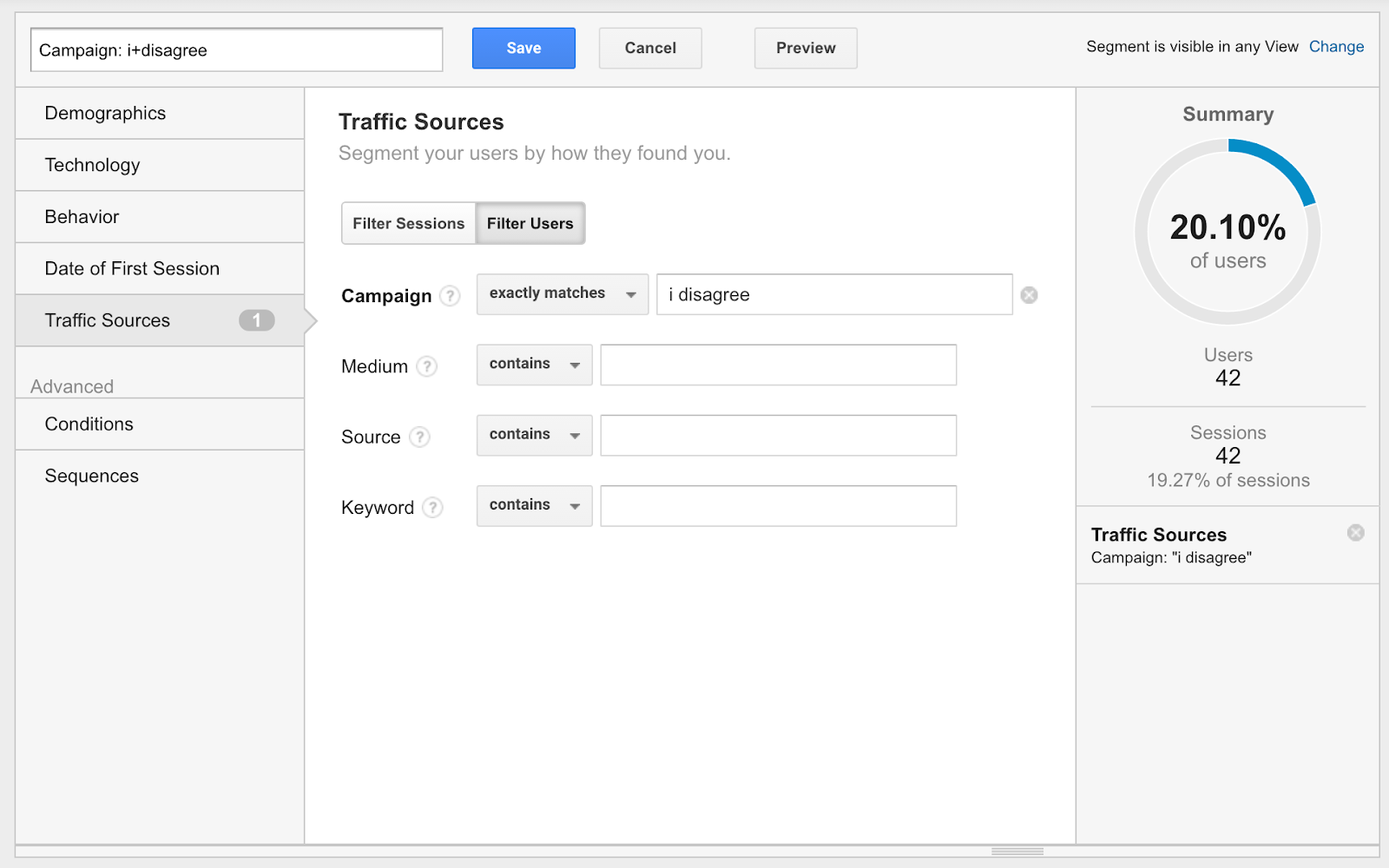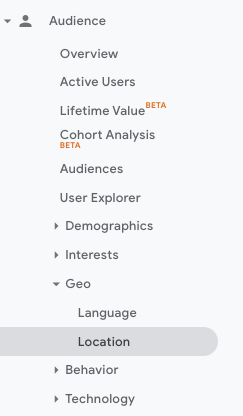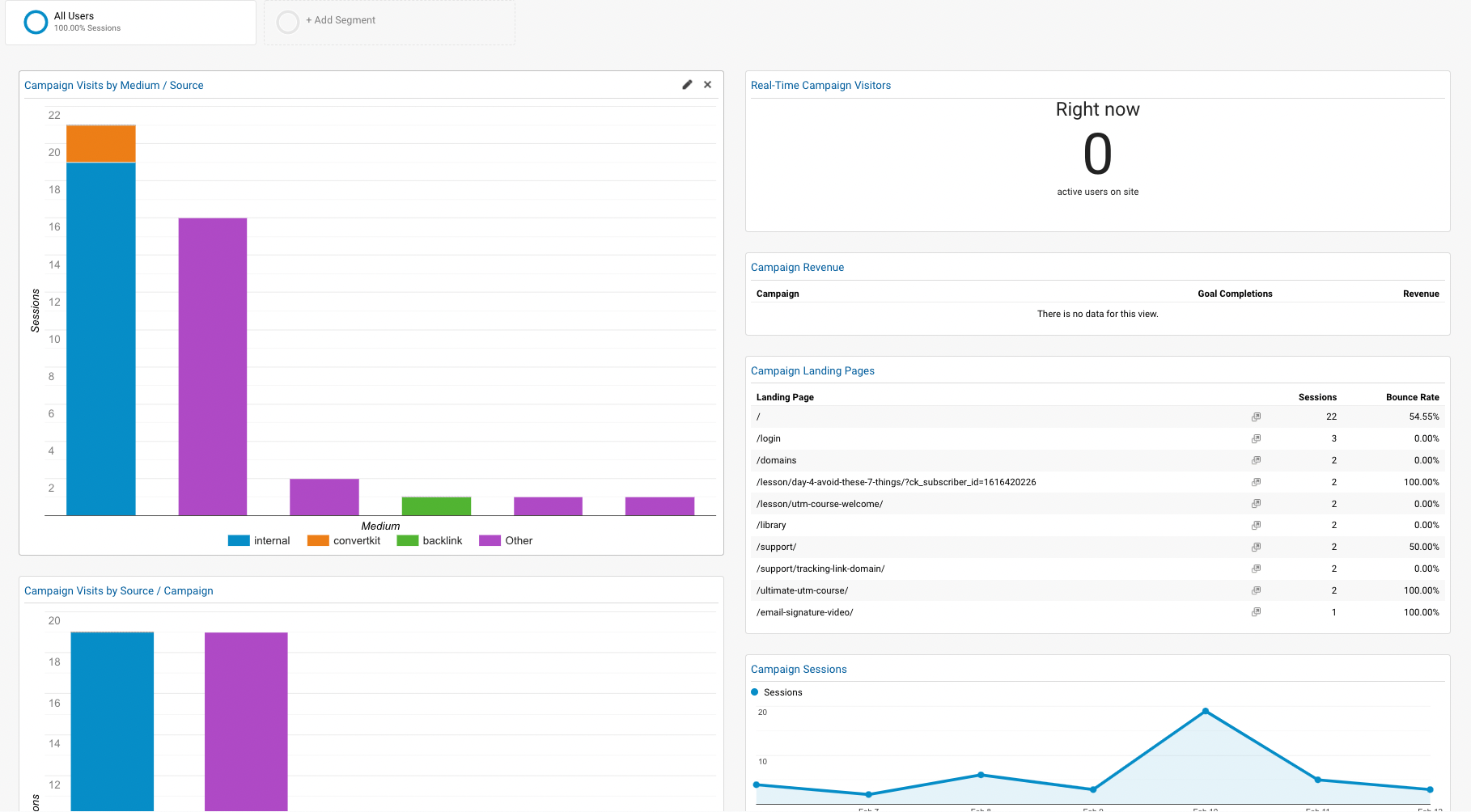All Blogs
Intro to Understanding UTM Data
A brief breakdown of UTM reporting and using Advanced Analytics to analyze your UTM data.
Posted On June 22, 2022
Table of Contents
Introduction
As you may know, Google Analytics has an enormous amount of power under the hood. This page would become a much longer course if we tried to cover reporting in full detail. Instead, let's look at the key concepts, and from there you can explore the platform and customize it to suit your needs.
Google has added some pretty decent contextual training in recent years that helps you get the most out of the platform. When many people started with Google Analytics, they had to do a lot of guessing and checking! If you want to get a deeper dive into using the platform, we recommend their tutorials.
Standard Reports

The ‘All Campaigns’ report is the best place to start.
This report will show you all your key metrics grouped by any UTM tag you prefer. You can also use the highlighted ‘Secondary Dimension’ to group your data together quickly for analysis.
For example, you could use this report to look at all traffic grouped by Campaign Source and Campaign Name. If you have an affiliate program for your new book, you might see Campaign Source ‘affiliate’ and Campaign Name ‘book+launch’ and from there you can see exactly how many downloads came from your affiliate promotions.
Notice that inside Google Analytics, your ‘+’ symbols are replaced with spaces - making everything easier to read. That’s why consistent UTM formatting matters!
Segments
One of the most powerful features within Google Analytics is the segmentation options shown at the top of your reports.
Segments are groups of sessions (or users) that meet specific criteria. Google Analytics includes many useful defaults, but the real power is being able to create your own segments. These “custom segments” mean you can slice-and-dice your data to answer nearly any question you have.
When using the segments feature, you’re able to view any report within Google Analytics (including custom reports) showing only data related to the selected segments. This allows you to dig into all sorts of information that would otherwise be hidden in averages. This kind of advanced analysis will help you make more informed marketing decisions, so I’d definitely recommend investing the time.
Session Segments vs. User Segments
You can decide whether your segmentation rules are defined by the session or the user. What does this mean?
Imagine you had a physical store. In your store, a session would refers to an individual person’s visit to your store. if they return to the store tomorrow, that will be a different session even though they’re the same person. A user would refer to the individual, and any analysis of that person would include all of their sessions (visits to your store).
The ability to choose between sessions and users means you now have a bunch of new options including the capacity to look at people that were exposed to a campaign but didn’t purchase or convert in that first session.
Custom UTM Segments
Custom segments allow you to create segments based on any combination of rules (there are many options you can explore in your account). In our case, we can use the data collected from our UTM Tags.
Let’s walk through an example. You want to know how each of your traffic sources performed in an eBook Promotion campaign.
I just ran a mini promotion for an eBook, so I’ll walk you through with some real data.
Start by creating a segment based on Campaign Name.

There’s a lot you can look at now that you have this segment, including creating segments for other campaigns to see how different campaigns impact other metrics.
For the sake of demonstration, let’s quickly look at what countries our initial traffic came from:

That’s interesting - but wouldn’t it be more useful if we could see this information based on which traffic source these visitors came from? Well, we can do that by using something called the ‘secondary dimension’.

This is just a simple example, but there’s a lot of options available to you now that you understand how to create custom segments, so spend the time to think about how you can draw useful information from your reports using Custom Segments.
Get your free Google Analytics dashboard
Google Analytics has the ability to build custom dashboards. Below is a screenshot of what our UTM dashboard looks like. If you’d like to use it yourself, complete the form to instantly receive the link.









